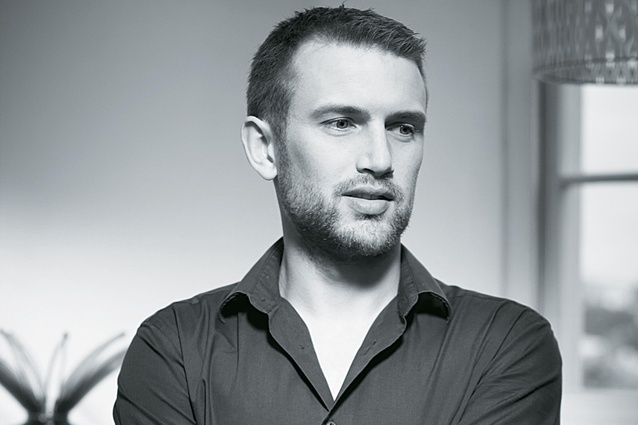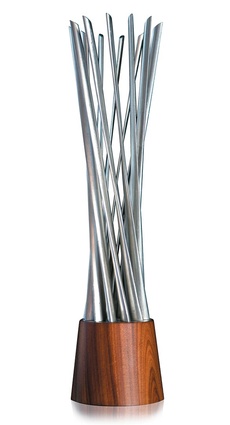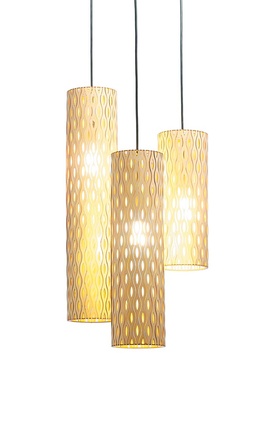Chris Metcalfe
We chat to Auckland designer, Chris Metcalfe, 27, about his work in furniture and homeware design.
Urbis: What do you do?
Chris Metcalfe: I am the director of design at Finewood Furniture and I also have my own business that sells a small range of my own designs. My personal range is small, and includes the Arbolito Fruit Bowl, Lattice platter and various sizes of Punga Lights. My main focus is my position at Finewood, where I make improvements to our existing range, conceptualise new furniture designs, then don my overalls and prototype them in the frame shop. I also work with other New Zealand designers, such as David Trubridge, Fletcher Vaughan and Ed Cruikshank, to assist them with the process of design to achieve the look they want.
U: What inspires you and what sort of response do you hope to evoke with your designs?
CM: I am inspired by a broad range of simple things and ideas: things you often take for granted, like clothes pegs, paper clips and switches. I like to think about these principles and see how they can be applied to other product ideas. But the paradox of simplicity is how hard it can be to achieve. I’m also inspired by [furniture designer] David Trubridge, for what he has managed to achieve from his base in Hawke’s Bay. It proves that it is possible to make an impact on the international scene through innovative design and a commitment to core values. And [Auckland designer] Jamie McLellan, as everything he touches seems to turn to gold. His eye for detail and focus on design process creates some incredible results. Now, if only I could get him on board for a collaborative project with Finewood! With my own designs, I hope to evoke a sense of delight and to give the consumer an insight into the thought process involved in the design of the product. I want them to see the product they are holding for more than the face value and understand why it is the way it is.
U: What about functionality? That seems important too.
CM: Functionality and delight are equally important in my design process. One can’t exist without the other, as you will have a hard time finding delight in something that doesn’t work. At a bare minimum a product has to serve a function, otherwise it has no business existing in the first place. The delight is the sugar on the top.
U: How do you achieve this balance?
CM: I am very critical about my own designs, I don’t want to just design another ‘thing’. It can’t just be something, it needs to be something that does something. It needs a reason for being. What does it do differently? What is it trying to achieve? The side effect of incorporating this thought process is that it makes the product more dynamic, or fun, which can only be a good thing.
U: What are your two favourite design objects and why?
This is going to make me sound like an Apple fanboy, but my two favourite design objects would be the ones I am in constant contact with everyday: the iPhone and MacBook Pro. They enable me to do everything I need to do without obstructing the process. The iPhone keeps me connected and the MacBook is my creative hub. The amount of thought and consideration that went into every little detail of them: they truly are feats of design and engineering. But the most remarkable thing is that, when using them the way they were intended, the design falls to the wayside and they become extensions of your thought process.
U: What can we expect to see from you in the future?
CM: At Finewood, I hope you will see a big development in our commercial furniture for office spaces. There is a tremendous amount of scope here for innovation and my main task is developing a new range of commercial furniture that is guided by research around productivity and collaboration in the workplace. We are aiming to launch in the local market by the middle of 2013, then into other markets through our distribution partners in 2014. It will be a fundamental shift for the company so it is quite exciting. For my own designs, I am looking at introducing some coasters, a desk light, a trestle table (inspired by the humble wooden clothes peg) and a dynamic pendant light in the near future. Figuring out the mechanism behind the light is the biggest challenge I have faced so far, but that means it should translate into something pretty exciting in its final form.
U: Where can people buy your products?
CM: There is a handful of retailers around the country stocking my products: Essenze and Auckland Art Gallery in Auckland; Backhouse Interiors in Wellington. And CleverBastards sells them for me online.
Image credits: AMP Ltd; Alanah Paterson; Adam Custins.














